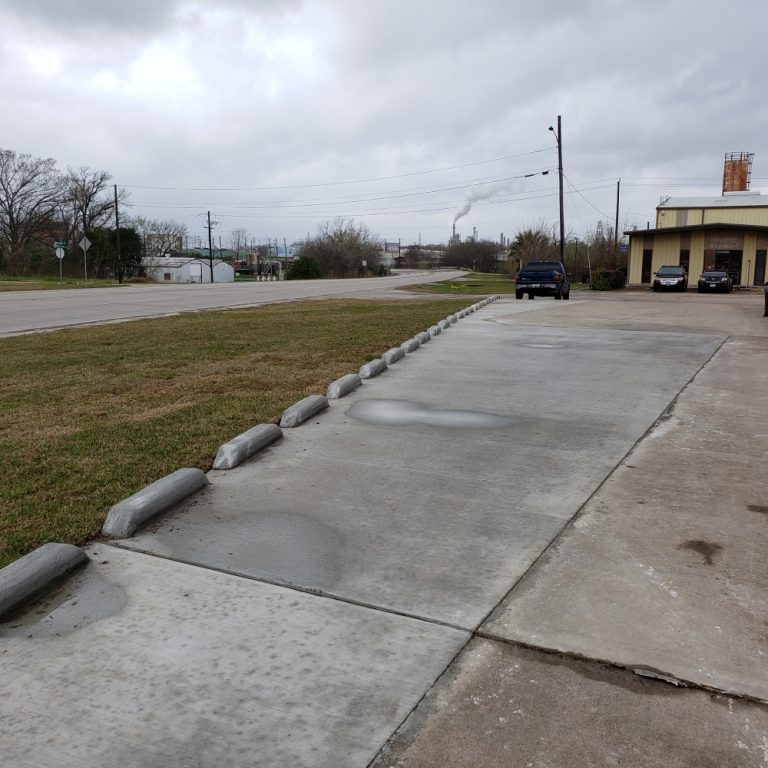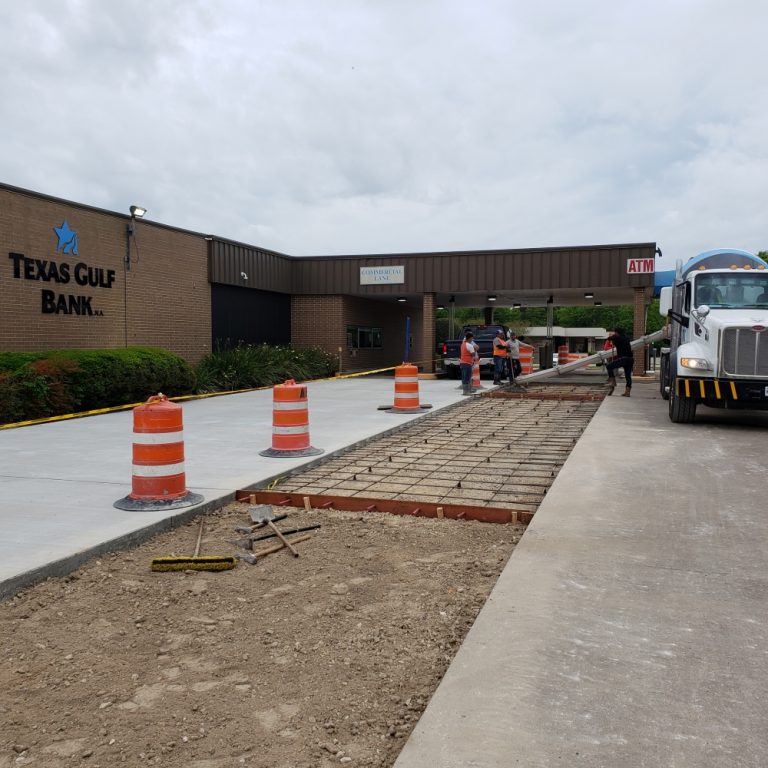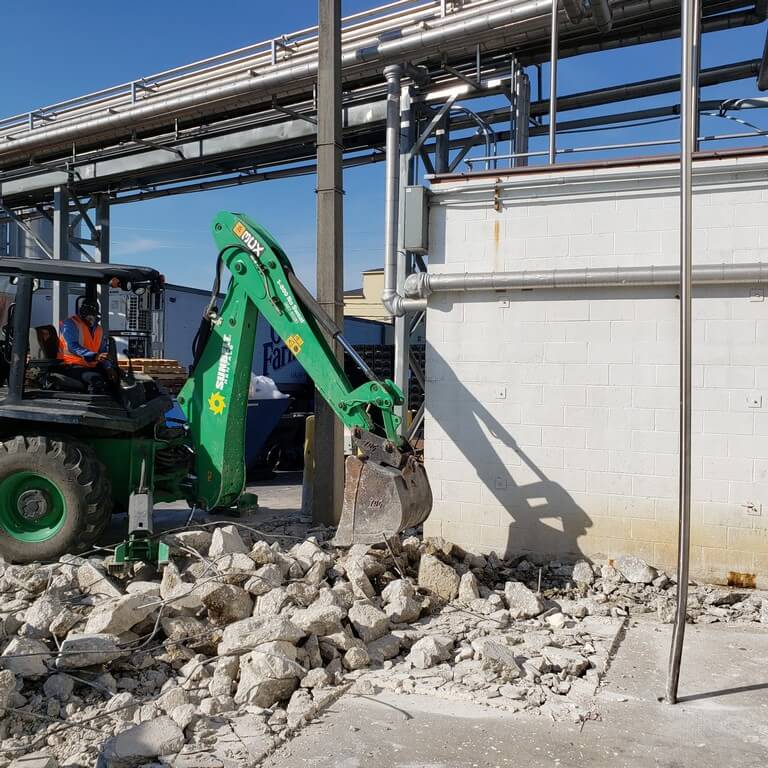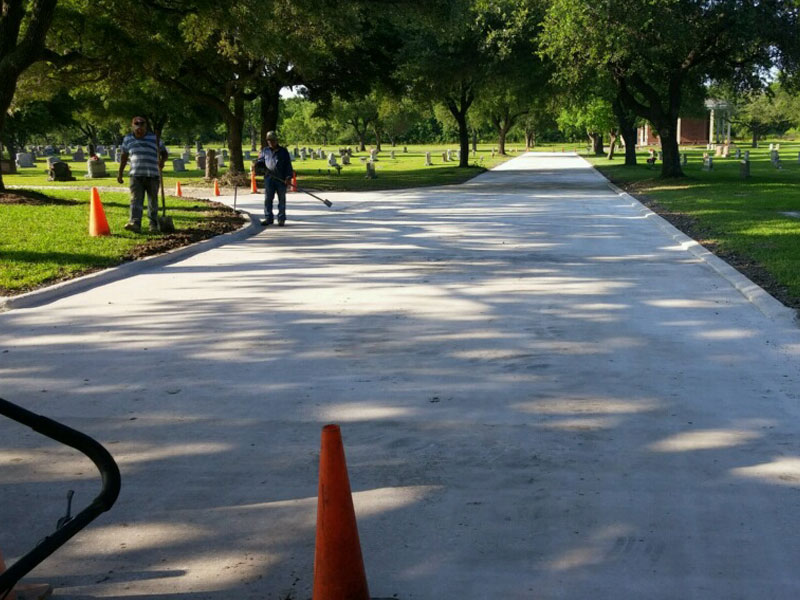Concrete Repair Services in Houston
Concrete Repair Services Can Extend The Life Of Your Paving And Construction
Concrete is among the most durable construction materials available and will last for decades with proper, periodic maintenance. Even the most durable material needs occasional support, and the American Paving team is equipped to provide concrete repair and maintenance.
If your concrete paving or construction is showing signs of damage, acting quickly can prevent much more expensive repairs or replacement down the line. The question is, how do you know when it’s time to schedule concrete repair?
When Is It Time To Repair Concrete, And When Is It Time To Replace It?
One of the advantages of using concrete is that it holds up well even with minor issues. If any of the following are present, you may just need to keep an eye on the concrete:
- Small patches of superficial cracking (the cracks do not extend into the pavement’s base)
- Minor blistering
- Minor discoloration
These issues are common, although they may indicate future areas of weakness. Inspect the concrete regularly to ensure that such issues don’t become bigger problems. If they do, or if the following are present, it’s time to consider concrete repair:
- Cracks that are growing in length or forking off. If a lot of small cracks are quickly emerging in the same patch of concrete, repairs may be necessary.
- Flaking (also termed spalling). Spalling occurs when the top layer of the concrete peels or flakes off, exposing subsurface layers. Spalling can be caused by freeze and thaw cycles, poor curing, or a poor concrete mix.
- Uneven slabs and pavement. If your concrete pavement has an uneven feel and appearance, there could be issues with the concrete’s base, or it could be the result of poor installation.
- Other signs of wear and tear. Over time, concrete will take on various signs of age, including pitting, dents, potholes, and color fading. If the concrete just looks bad, repairs may be needed to restore it.
- Water pooling on the pavement. If water is gathering on your concrete slab, there could be problems with settling. Further, constant water exposure will eventually cause additional damage to the slab as water penetrates into deeper layers.
Sometimes, the slab may need to be completely replaced. If any of the following are true, your concrete may require total replacement:
- The slab is 30 or more years old – Concrete slab is expected to last for 30 years before replacement needs to be considered. If your concrete is reaching that age and it’s apparent, replacement will likely be more cost effective than repair.
- Aggregate is exposed and visible – Aggregate is used in the layers beneath the surface slab, and it is not designed for direct exposure to the elements. Fortunately, this aggregate typically sits deep enough in the pavement so that it isn’t exposed. If you can see it, though, the slab is likely compromised to the point where replacement is needed.
- Cracks extend into the pavement’s base – Water is the ultimate enemy of any pavement, especially if water can reach down to the pavement’s base. If it does, it will accelerate the effects of age and damage.
Cracks that extend deep enough to reach the pavement’s base represent a major threat to the slab and may indicate needing replacement. - Extensive resurfacing is needed to restore the pavement – Resurfacing is an option for pavement that isn’t yet ready for replacement, but still requires some maintenance to maintain its surface layers. However, if resurfacing would replace more than the top couple inches of pavement, then replacement may be the less costly long-term option.
In addition to the above, a concrete contractor may recommend replacement if the pavement was not installed properly or if the base is clearly deteriorating.



What Houston Concrete Repair Services Does American Paving Offer?
If it’s time for concrete maintenance, you’ll need an expert contractor to get the job done.
There are many reasons why concrete may show signs of damage. Rapid freezing and thawing, shrinkage due to drying, unregulated chemical reactions, excessive load bearing, corroded reinforcing steel – the list goes on.
No matter the reason, concrete repairs may involve the following:
- Cleaning and filling – If cracks are extremely fine and superficial, low viscosity repair materials may be all that’s needed to seal the damage. During a clean and fill, all debris is first removed from the crack. Once cleaned out, a low viscosity, high flow repair polymer can be gravity-fed into the crack. The repaired crack is protected while the material cures, and once it does, any hairline cracks should be stabilized.
- Epoxy injection – Clean and fills are effective for small cracks, but when cracks open up a bit wider, a stronger epoxy is needed. During the repair, the ports are drilled next to the crack and injectors are inserted into those ports. A non-sag epoxy sealant is injected into the crack, where it cures to form a rigid seal.
Epoxy injection is considered a structural repair in some cases, but it should not be used for active cracks, and it will not restore original or intended structural strength. - Routing and injection – Routing and injection is one of the most common forms of concrete repair and also involves the use of an epoxy repair material. First, a shallow groove is routed (cut) into the concrete, forming a shallow channel-like shape that will take the sealant.
Once routed, a repair material is injected into the groove. It’s essential that the right repair material be selected for the job because the seal could fail if it’s not flexible enough to compensate for future expansion and contracting. - Stitching – Stitching is an extensive form of repair reserved for major cracking. During stitching, ports are drilled next to the crack along its length, creating a U-like pattern. Metallic wire is passed through these ports, each one acting like a stitch. Repair polymers are also injected into the holes to anchor the stitches in place.

The American Paving Team Excels At Concrete Repair And Installation
American Paving has performed concrete construction and maintenance for decades to commercial clients throughout Houston and beyond. Our team is experienced, insured, and bonded, so we can handle repairs of any scope.
If your concrete is showing signs of age, wear, or damage, the American Paving team can help. Our crew can inspect your concrete, note any problems, and prescribe maintenance options to restore its function and appearance. In this way, we can help commercial property owners get the most out of their concrete.
